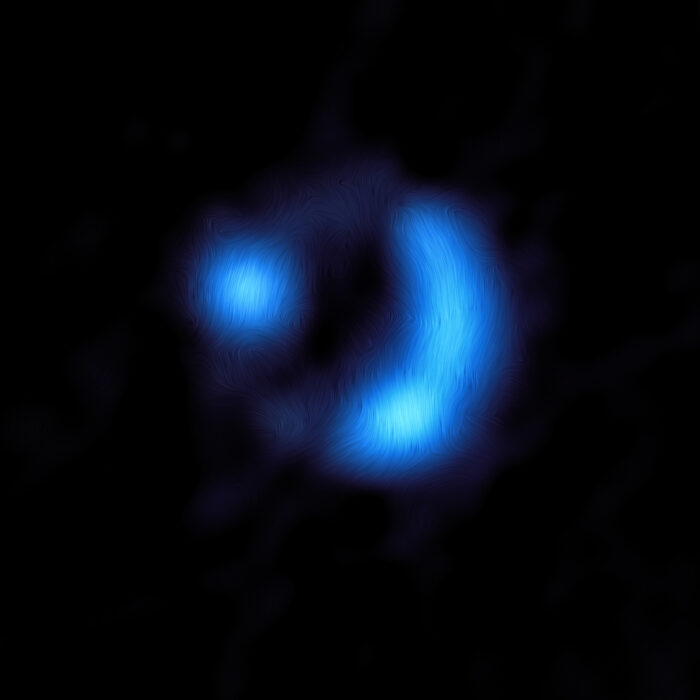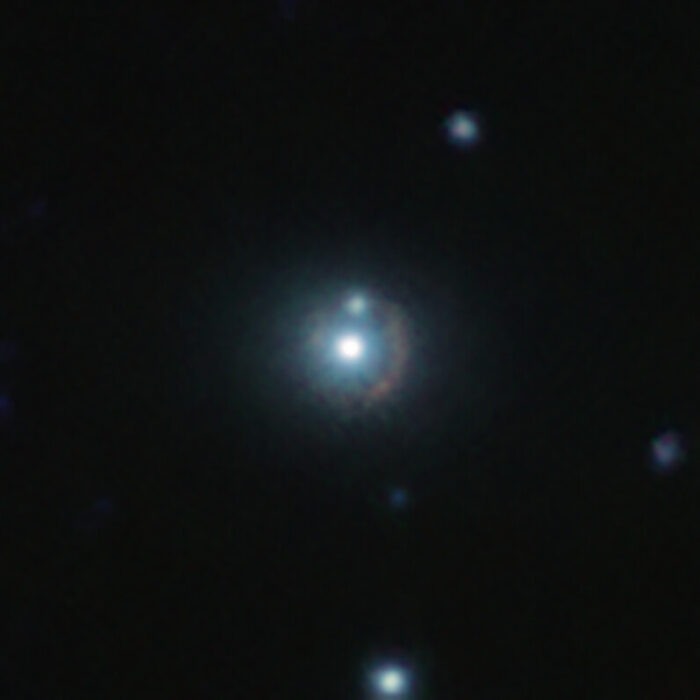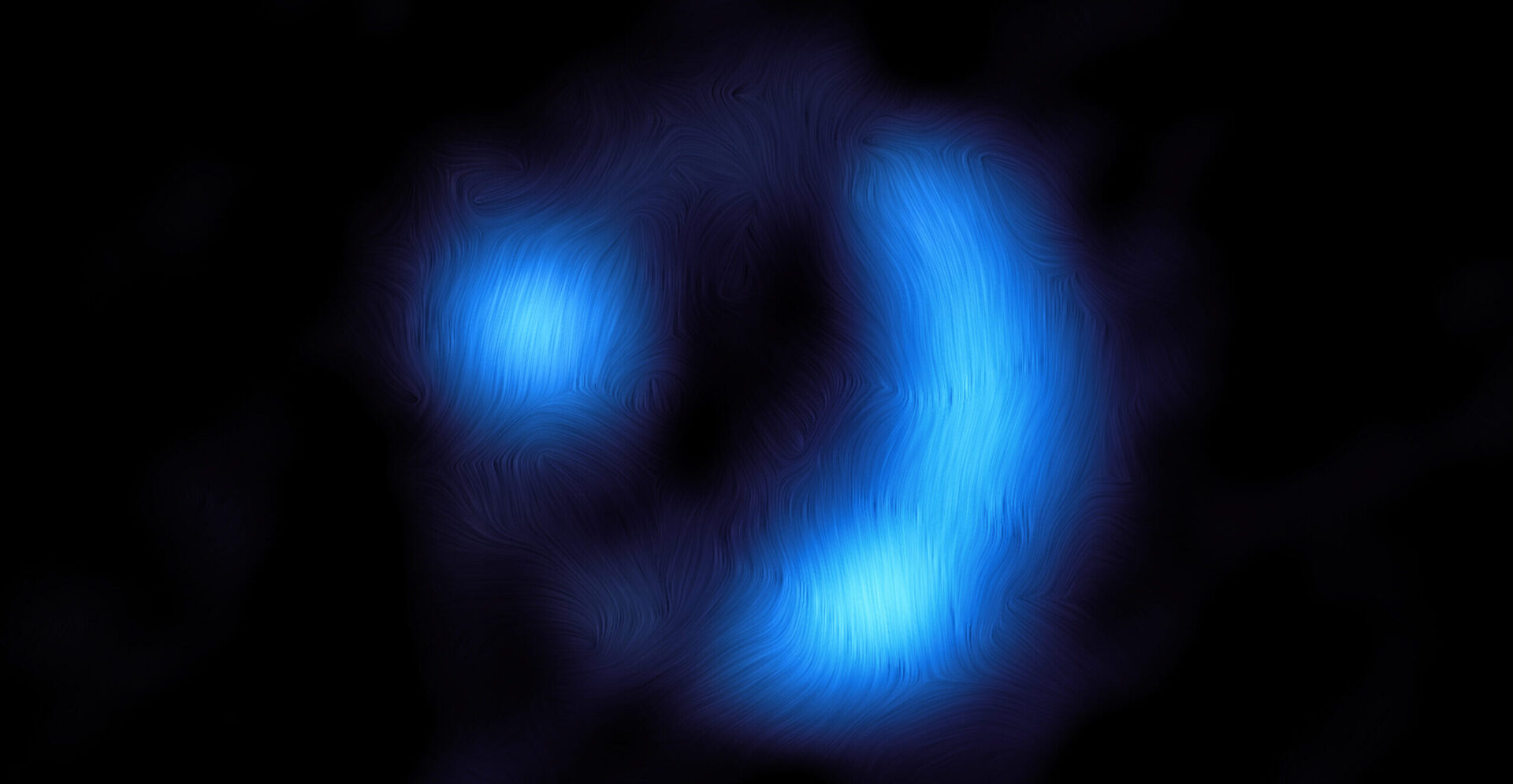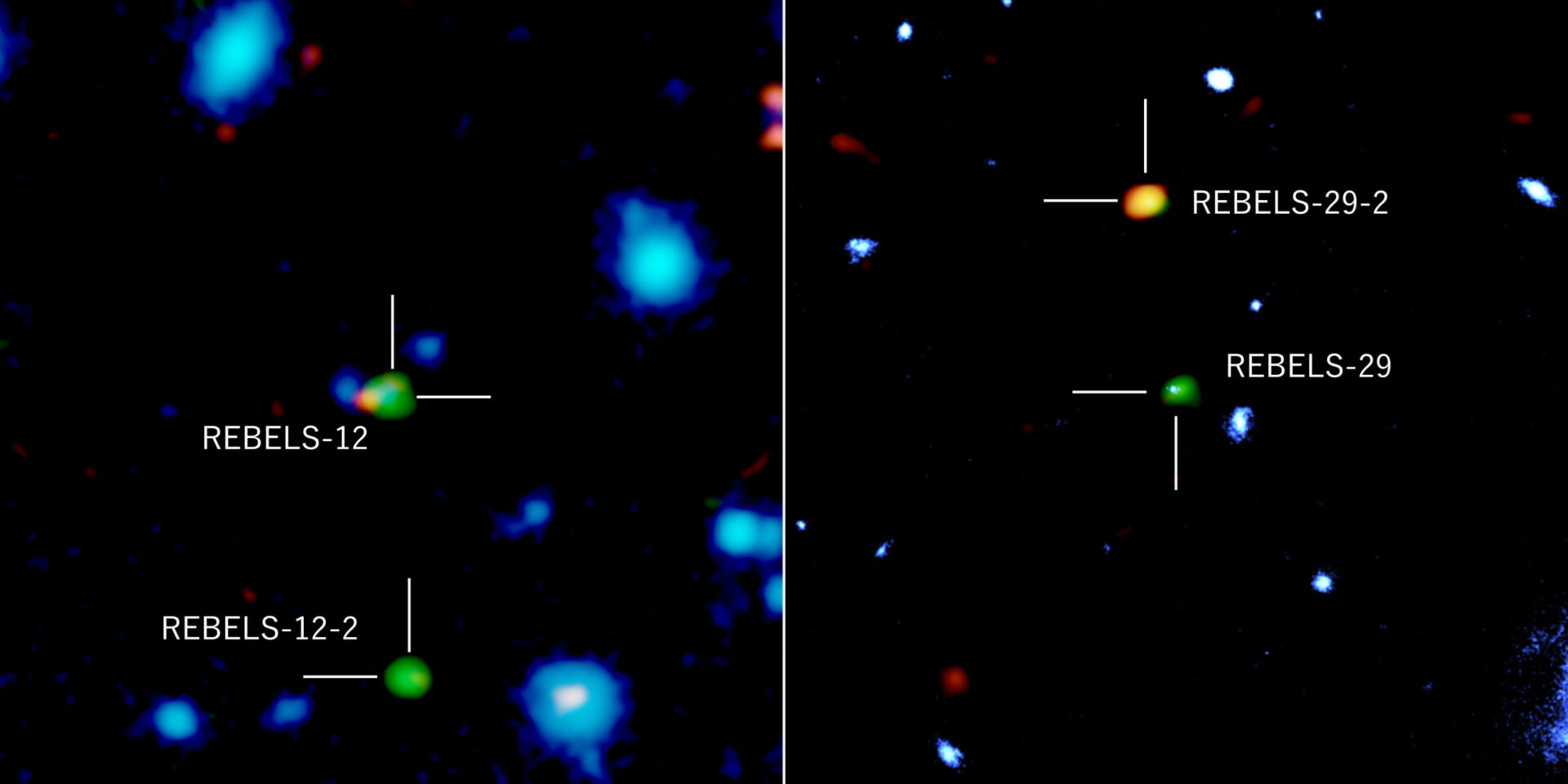Furthest ever detection of a galaxy’s magnetic field
Using the Atacama Large Millimeter/submillimeter Array (ALMA), astronomers have detected the magnetic field of a galaxy so far away that its light has taken more than 11 billion years to reach us. We see it as when the Universe was just 2.5 billion years old. The result provides astronomers with vital clues about how the magnetic fields of galaxies like our own Milky Way came to be.
Lots of astronomical bodies in the Universe have magnetic fields, whether it be planets, stars or galaxies. “Many people might not be aware that our entire galaxy and other galaxies are laced with magnetic fields, spanning tens of thousands of light-years,” says James Geach, a professor of astrophysics at the University of Hertfordshire, UK, and lead author of the study published today in Nature.
“We actually know very little about how these fields form, despite their being quite fundamental to how galaxies evolve,” adds Enrique Lopez Rodriguez, a researcher at Stanford University, USA, who also participated in the study. It is not clear how early in the lifetime of the Universe, and how quickly, magnetic fields in galaxies form because so far astronomers have only mapped magnetic fields in galaxies close to us.
Using ALMA, Geach and his team have discovered a fully formed magnetic field in a distant galaxy, similar in structure to what is observed in nearby galaxies. The field is about 1000 times weaker than the Earth’s magnetic field but extends over more than 16,000 light-years.
“This discovery gives us new clues as to how galactic-scale magnetic fields are formed,” explains Geach. Observing a fully developed magnetic field this early in the history of the Universe indicates that magnetic fields spanning entire galaxies can form rapidly while young galaxies are still growing.
The team believes that intense star formation in the early Universe could have played a role in accelerating the development of the fields. Moreover, these fields can in turn influence how later generations of stars will form. Co-author and ESO astronomer Rob Ivison says that the discovery opens up “a new window onto the inner workings of galaxies, because the magnetic fields are linked to the material that is forming new stars.”
To make this detection, the team searched for light emitted by dust grains in a distant galaxy, 9io9 [1]. Galaxies are packed full of dust grains, and when a magnetic field is present, the grains tend to align, and the light they emit becomes polarised. This means the light waves oscillate along a preferred direction rather than randomly. When ALMA detected and mapped a polarised signal coming from 9io9, the presence of a magnetic field in a very distant galaxy was confirmed for the first time.
“No other telescope could have achieved this,” says Geach. The hope is that with this and future observations of distant magnetic fields the mystery of how these fundamental galactic features form will begin to unravel.
Notes
[1] 9io9 was discovered in the course of a citizen science project. The discovery was helped by viewers of the British BBC television programme Stargazing Live, when over three nights in 2014 the audience was asked to examine millions of images in the hunt for distant galaxies.
Additional Information
This research was presented in a paper to appear in Nature.
The team is composed of J. E. Geach (Centre for Astrophysics Research, School of Physics, Engineering and Computer Science, University of Hertfordshire, UK [Hertfordshire]), E. Lopez-Rodriguez (Kavli Institute for Particle Astrophysics and Cosmology, Stanford University, USA), M. J. Doherty (Hertfordshire), Jianhang Chen (European Southern Observatory, Garching, Germany [ESO]), R. J. Ivison (ESO), G. J. Bendo (UK ALMA Regional Centre Node, Jodrell Bank Centre for Astrophysics, Department of Physics and Astronomy, The University of Manchester, UK), S. Dye (School of Physics and Astronomy, University of Nottingham, UK) and K. E. K. Coppin (Hertfordshire).
The original press release was published by the European Southern Observatory (ESO), an ALMA partner on behalf of Europe.
The Atacama Large Millimeter/submillimeter Array (ALMA), an international astronomy facility, is a partnership of the European Organisation for Astronomical Research in the Southern Hemisphere (ESO), the U.S. National Science Foundation (NSF) and the National Institutes of Natural Sciences (NINS) of Japan in cooperation with the Republic of Chile. ALMA is funded by ESO on behalf of its Member States, by NSF in cooperation with the National Research Council of Canada (NRC) and the National Science and Technology Council (NSTC) in Taiwan and by NINS in cooperation with the Academia Sinica (AS) in Taiwan and the Korea Astronomy and Space Science Institute (KASI).
ALMA construction and operations are led by ESO on behalf of its Member States; by the National Radio Astronomy Observatory (NRAO), managed by Associated Universities, Inc. (AUI), on behalf of North America; and by the National Astronomical Observatory of Japan (NAOJ) on behalf of East Asia. The Joint ALMA Observatory (JAO) provides the unified leadership and management of the construction, commissioning and operation of ALMA.
Images


Video
We first see the night sky in visible light and then switch to infrared light when we finally reach 9io9. Here, the galaxy appears as a faint reddish arc curved around a bright nearby galaxy. We then see the ALMA image of 9io9 at millimeter wavelengths, with the orientation of the magnetic field indicated by overlaid curves. Credit: ESO/ALMA (ESO/NAOJ/NRAO)/DESI/CFHT/N. Risinger (skysurvey.org)/J. Geach et al.
Contacts
-
Nicolás Lira
Education and Public Outreach CoordinatorJoint ALMA Observatory, Santiago - ChilePhone: +56 2 2467 6519Cel: +56 9 9445 7726Email: [email protected] -
Bárbara Ferreira
ESO Media Manager -
Jill Malusky
Public Information Officer -
Naoko Inoue
EPO officer, ALMA ProjectNational Astronomical Observatory of Japan (NAOJ)Email: [email protected]


